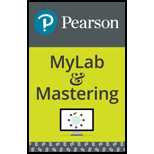
(a)
Interpretation:
The balanced combination reaction for the reaction of nitrogen with oxygen to give dinitrogen pentaoxide gas is to be stated.
Concept introduction:
A balanced chemical equation represents an equation in which all the reactants and products are written with their
(b)
Interpretation:
The balanced combination reaction for the reaction of chlorine with oxygen to give dichlorine trioxide gas is to be stated.
Concept introduction:
A balanced chemical equation represents an equation in which all the reactants and products are written with their stoichiometric coefficient and physical states. The number of atoms of an element on both sides of the equation is equal.
Want to see the full answer?
Check out a sample textbook solution
Chapter 7 Solutions
EP INTRODUCTORY CHEM.-MOD.MASTERINGCHEM
- Write a balanced equation for each of the following decomposition reactions. (a) Solid chromium(III) carbonate decomposes with heat to give solid chromium(III) oxide and carbon dioxide gas. (b) Solid lead(IV) carbonate decomposes with heat to give solid lead(IV) oxide and carbon dioxide gas.arrow_forwardWrite a balanced chemical equation for each of the following decomposition reactions: (a) Magnesium carbonate decomposes on heating. (b) Copper(I) carbonate decomposes on heating.arrow_forwardX is a metal. The physical properties of metal X will be different after atom X reacts with chlorine atom and form compound XCl. Distinguish between the physical properties of metal X and XCI compound.arrow_forward
- Write a balanced equation for the reaction between solid lead(III) oxide and solid carbon to produce solid lead and carbon dioxide gas.arrow_forwardMost abundant metal on the surface of the earth:(a) Iron(b) Aluminium(c) Calcium(d) Sodiumarrow_forwardNitrogen monoxide gas is produced by the reaction of oxygen gas and nitrogen gas . Write a balanced chemical equation for this reaction.arrow_forward
- is formed from... Br NH2 N-H (A) (B) (C) (D) (E) O Compounds B and E Compounds A and E Compounds C and D Compounds A and Darrow_forwardWrite a balanced equation for the decomposition of ammonium nitrate to form molecular nitrogen, molecular oxygen, and water. (Hint: Balance oxygen last, since it is present in more than one molecule on the right side of the equation.)arrow_forwardWrite the chemical equation for the reaction of aluminum metal plus fluorine gas yields solid aluminum fluoride.arrow_forward
- Write the Balanced chemical equation for the following: Gaseous ammonia reacts with gaseous hydrogen chloride to form solid ammonium chloride.arrow_forwardWrite the balanced chemical equations for the following reactions.(a) Calcium hydroxide + Carbon dioxide Calcium carbonate + Water(b) Zinc + Silver nitrate Zinc nitrate + Silver(c) Aluminum + Copper chloride Aluminum chloride +Copper(d) Barium chloride + Potassium sulphate Barium sulphate + potassium chloridearrow_forwardwrite a balanced chemical equation for each (A) Iron (III) chloride reacts with sodium hydroxide to produce iron (III) hydroxide and sodium chloride. (B) Magnesium nitrite reacts with perchloric acid to produce magnesium perchlorate and nitrous acid. (C) Copper(II) hydroxide reacts with hydrosulfuric acid to produce copper (II) sulfide and water.arrow_forward
 ChemistryChemistryISBN:9781305957404Author:Steven S. Zumdahl, Susan A. Zumdahl, Donald J. DeCostePublisher:Cengage Learning
ChemistryChemistryISBN:9781305957404Author:Steven S. Zumdahl, Susan A. Zumdahl, Donald J. DeCostePublisher:Cengage Learning ChemistryChemistryISBN:9781259911156Author:Raymond Chang Dr., Jason Overby ProfessorPublisher:McGraw-Hill Education
ChemistryChemistryISBN:9781259911156Author:Raymond Chang Dr., Jason Overby ProfessorPublisher:McGraw-Hill Education Principles of Instrumental AnalysisChemistryISBN:9781305577213Author:Douglas A. Skoog, F. James Holler, Stanley R. CrouchPublisher:Cengage Learning
Principles of Instrumental AnalysisChemistryISBN:9781305577213Author:Douglas A. Skoog, F. James Holler, Stanley R. CrouchPublisher:Cengage Learning Organic ChemistryChemistryISBN:9780078021558Author:Janice Gorzynski Smith Dr.Publisher:McGraw-Hill Education
Organic ChemistryChemistryISBN:9780078021558Author:Janice Gorzynski Smith Dr.Publisher:McGraw-Hill Education Chemistry: Principles and ReactionsChemistryISBN:9781305079373Author:William L. Masterton, Cecile N. HurleyPublisher:Cengage Learning
Chemistry: Principles and ReactionsChemistryISBN:9781305079373Author:William L. Masterton, Cecile N. HurleyPublisher:Cengage Learning Elementary Principles of Chemical Processes, Bind...ChemistryISBN:9781118431221Author:Richard M. Felder, Ronald W. Rousseau, Lisa G. BullardPublisher:WILEY
Elementary Principles of Chemical Processes, Bind...ChemistryISBN:9781118431221Author:Richard M. Felder, Ronald W. Rousseau, Lisa G. BullardPublisher:WILEY





